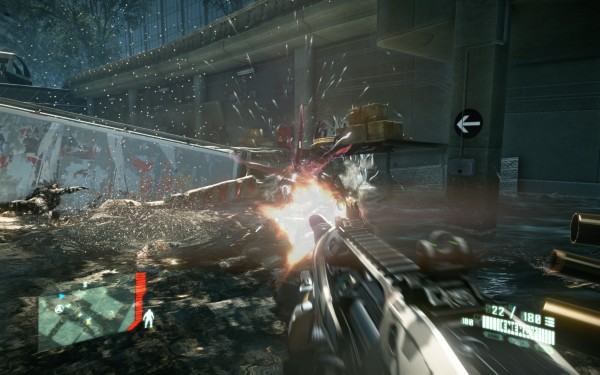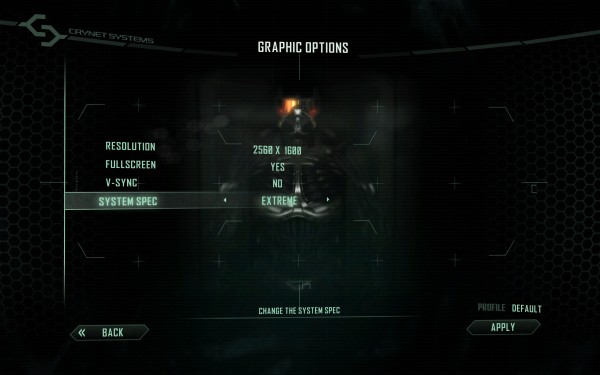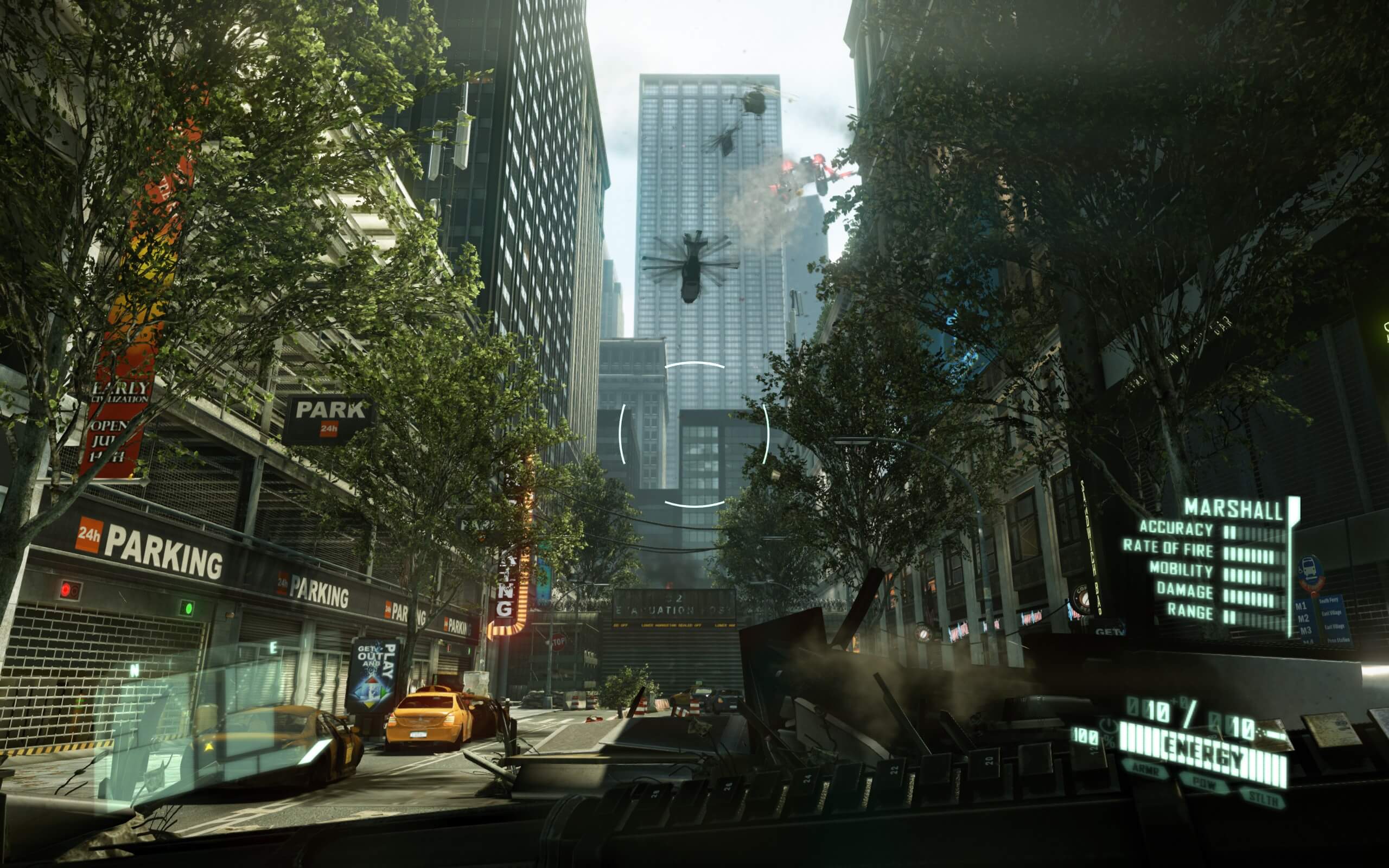Testing Notes & Methodology
Given that Crysis 2 is a DX9 title, we thought it would be interesting to see how some older cards perform, such as the Radeon HD 4850 and GeForce GTX 260. In total we have tested 25 graphics cards from AMD and Nvidia. The latest official drivers were used for all graphics cards.
We used Fraps to measure frame rates during a minute of gameplay from the first single-player level called Second Chance for all our benchmarks. The scene is quite busy and should provide a fair representation of the performance you can expect to see on Crysis 2.
Our Intel Core i7 2600K processor was overclocked to 4GHz when testing the GPUs to remove any possible CPU bottleneck. The game was tested at three resolutions: 1680x1050, 1920x1200 and 2560x1600 using the High, Very High and Extreme visual presets.

Before we get rolling, here are a few notes from Crytek about the game's quality settings:
"The lowest PC spec, 'High', is almost the same as the spec used on consoles, besides per-platform differences, such as different texture formats for render targets and different normal map formats on PS3 due to lack of 3Dc support. PC specs also feature improved texture quality, since streaming for PC has not been used due to the vast memory resources available. Anisotropic filtering is enabled for all specs, while on PS3 it is dynamically adjusted and goes up to 16x anisotropic, and on Xbox 360 it is limited to 4x anisotropic in order to reduce the performance cost.
Although many multiplatform engines often do not use AA on certain platforms, CryENGINE 3 uses a form of amortized MSAA reminiscent of OpenGL accumulation buffer approaches, called Post MSAA.
Such an approach works by accumulating sub-samples over frames and reprojecting them to the current frame. It should not be confused with 'temporal antialiasing' commonly used on 60 fps games that simply do a linear blending and hence have ghosting for every pixel. The Post MSAA approach is very general and allows for a sub-pixel accuracy solution on all platforms at a cost of just 1ms on consoles, and less than 0.2 ms on PCs at 1080p resolutions.
Due to its sub-pixel accuracy, it minimizes moiré patterns and visible shimmering on surfaces with high frequency characteristics (fences, grids, etc) commonly visible in EdgeAA/MLAA or similar techniques. It works on alpha tested geometry, and performs shader anti-aliasing i.e. on surfaces using Parallax Occlusion mapping, or similar aliasing prone techniques. It also performs post-tone mapping without damaging HDR quality on high contrast areas like regular hardware MSAA approaches (pre-DX11).
Such a technique is quite a novelty in the video game industry and it's very likely Crytek will release improved versions as it has potential to also be merged with different techniques - for example, it's currently also combined with Nvidia's FXAA in 'Extreme' spec, in order to improve quality further with sub-pixel accuracy results from post MSAA."
Although SLI appeared to be working very well when using the GeForce GTX 590, the Crossfire performance of the Radeon HD 6990 was very poor and obviously needs work.
We understand many of you like to have CPU scaling performance included along with graphics, so we clocked our Core i7 2600K processor at a range of frequencies between 2GHz and 4GHz to see how that affected performance. We also ran similar tests using a range of processors from AMD and Intel to see how they compared.

Test System Specs
- Intel Core i7 2600K @ 4GHz
- x2 2GB G.Skill DDR3 PC3-12800 (CAS 7-7-7-20)
- Asus P8P67 Deluxe (Intel P67)
- OCZ ZX Series 1250w
- Crucial RealSSD C300 256GB (SATA 6Gb/s)
- GeForce GTX 590 (3072MB)
- GeForce GTX 580 (1536MB)
- GeForce GTX 570 (1280MB)
- GeForce GTX 560 Ti (1GB)
- GeForce GTX 550 Ti (1GB)
- GeForce GTX 480 (1536MB)
- GeForce GTX 470 (1280MB)
- GeForce GTX 460 (1GB)
- GeForce GTX 285 (1GB)
- GeForce GTX 260 (896MB)
- GeForce GTS 450 (1GB)
- GeForce 9800 GT (512MB)
- Radeon HD 6990 (4096MB)
- Radeon HD 6970 (2GB)
- Radeon HD 6950 (2GB)
- Radeon HD 6870 (1GB)
- Radeon HD 6850 (1GB)
- Radeon HD 5870 (1GB)
- Radeon HD 5850 (1GB)
- Radeon HD 5830 (1GB)
- Radeon HD 5770 (1GB)
- Radeon HD 5750 (1GB)
- Radeon HD 5670 (512MB)
- Radeon HD 4890 (1GB)
- Radeon HD 4850 (1GB)
- Microsoft Windows 7 Ultimate 64-bit
- Nvidia Forceware 266.66
- Nvidia Forceware 266.59
- Nvidia Forceware 267.71
- ATI Catalyst 11.2
- ATI Catalyst 11.4 Preview
